It’s time to work on attention with numbers! We present the adult worksheet to work on selective attention: Count Stimuli by Type.
Count Stimuli by Type
What does it involve?
This NeuronUP game consists of counting the number of items of each type. Keep in mind that when you move up a level, to increase the difficulty there are more mixed elements and they will increasingly resemble each other.
The following example is a medium-level worksheet:
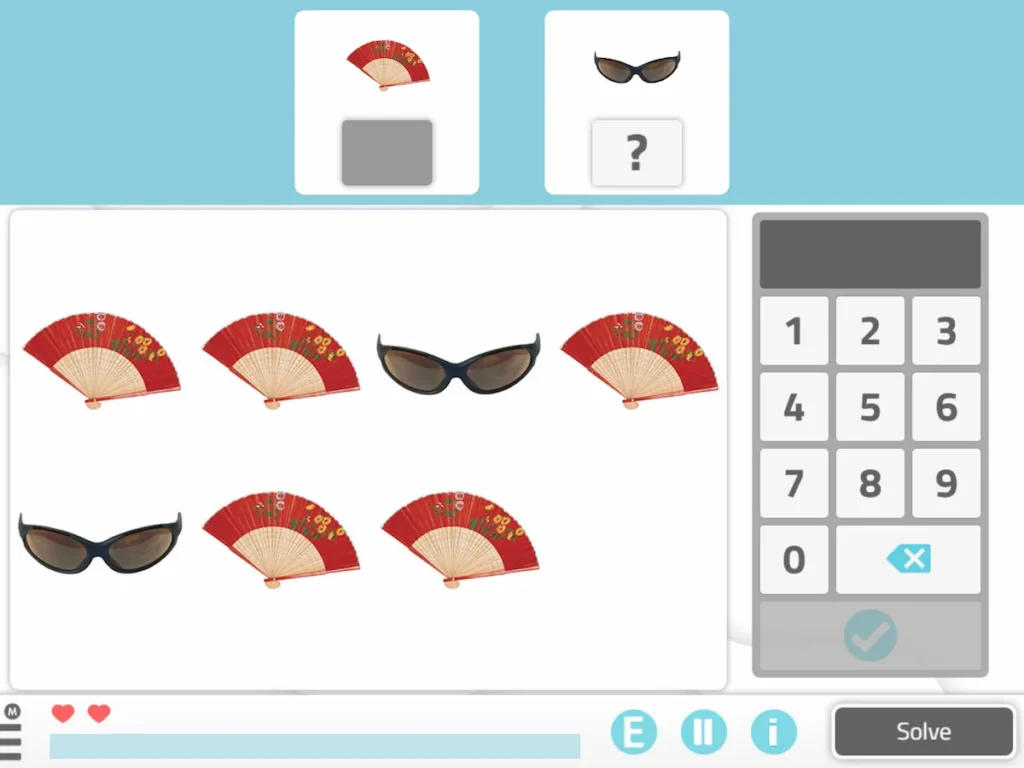
It’s not so easy to count at a glance, right? You need to concentrate and pay attention 😉
What does this activity work on?
This activity targets selective attention.
Format
This worksheet is available both in digital and in paper.
Improved paper version
This worksheet was already available in paper format. But we have renewed and improved it! Previously this activity was available with drawings and Right Now the worksheets are created with real images.
We have also included many more exercises.
Here’s an example on paper of an easy-level worksheet:
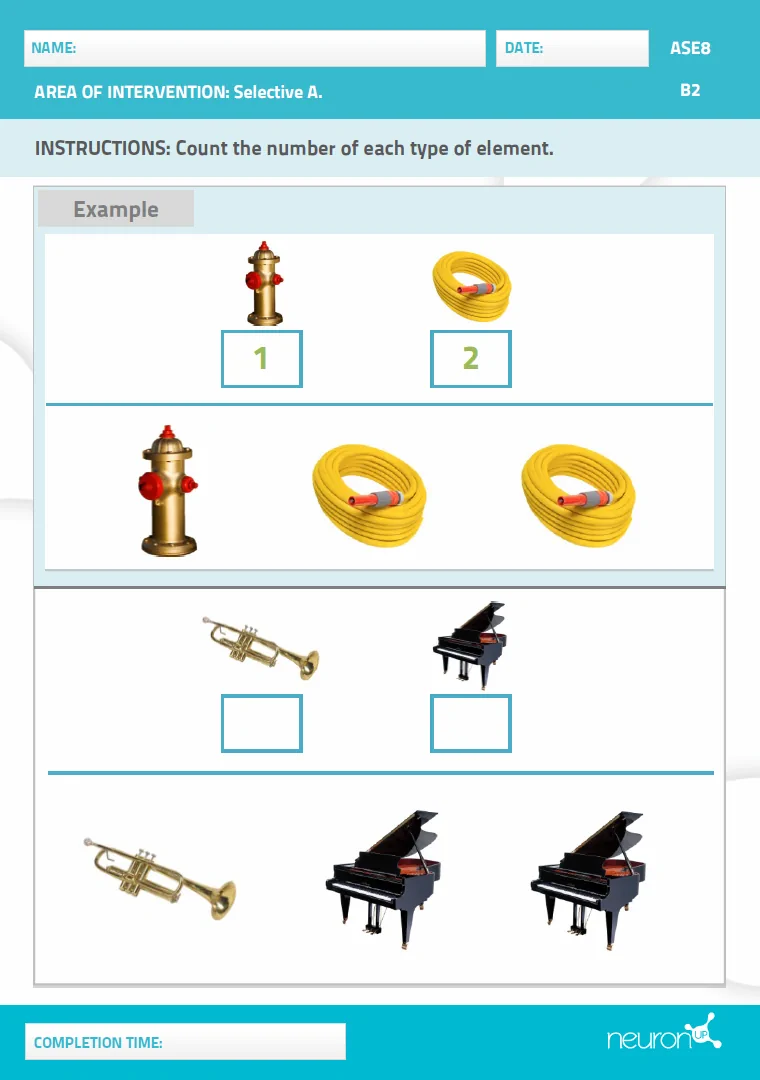
Real-life application
This activity can be applied to many real-life tasks, for example, counting the forks, knives and spoons needed when Setting the Table according to the number of diners.
Languages
This worksheet is available in Spanish, English, French, Portuguese, Catalan, German and Italian.
Play by levels
This worksheet is available in 5 levels basic, easy, medium, difficult and advanced with 10 phases in each of them.
Children’s version
This activity originates from the children’s worksheet How Many of Each. It also targets selective attention and consists of counting how many elements there are of each type. It’s also available in paper.
What’s different? The design is completely tailored to children’s tastes, as you can see in the following image:
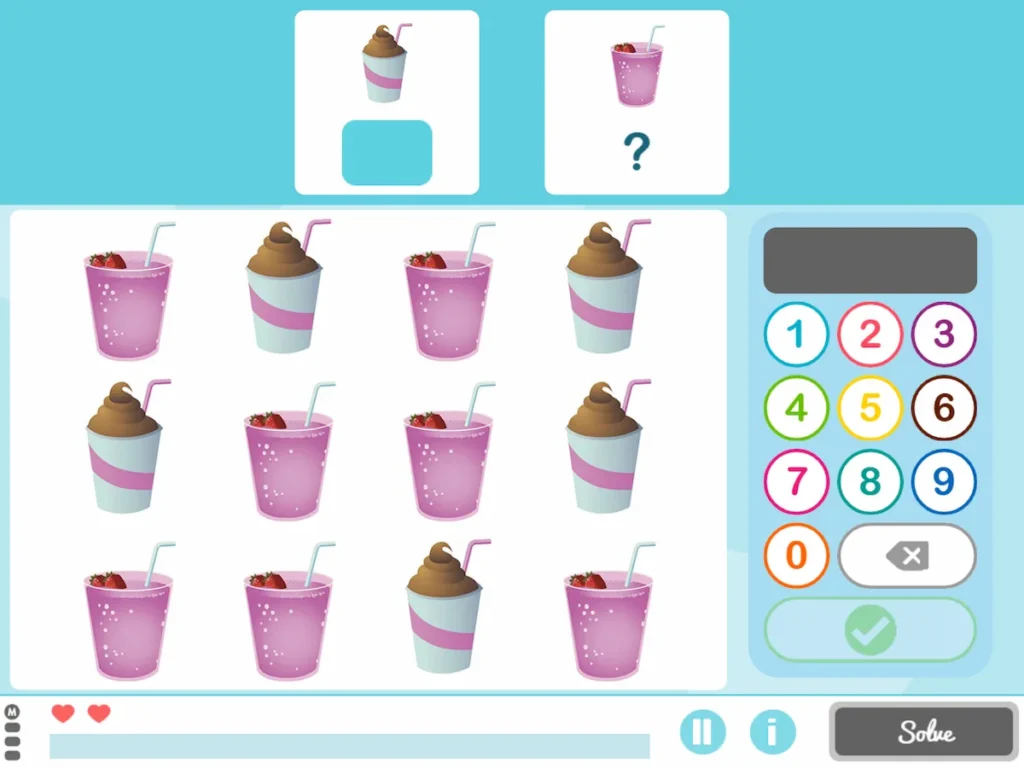
If you found this article about an attention worksheet with numbers useful, you might also be interested in the following blog posts:
“This article has been translated. Link to the original article in Spanish:”
Ficha de atención con números: Contar estímulos por tipo


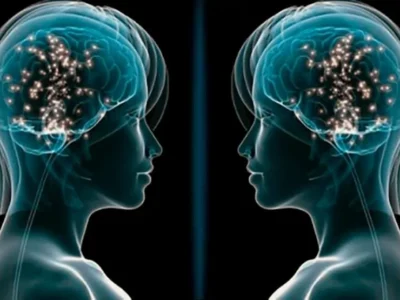
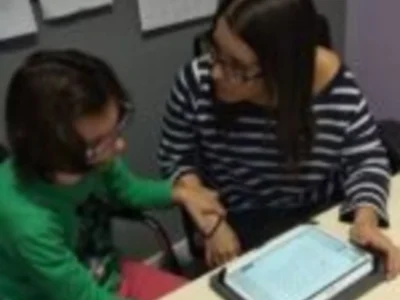


 Bipolar disorder: what it is, types, causes, symptoms, diagnosis, and treatment
Bipolar disorder: what it is, types, causes, symptoms, diagnosis, and treatment
Leave a Reply